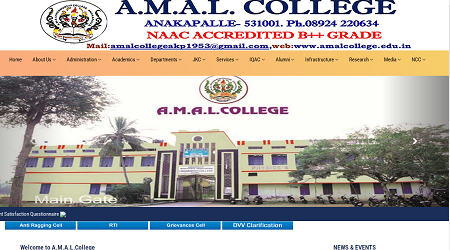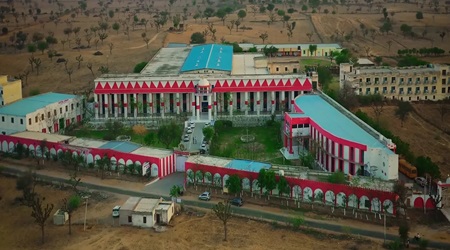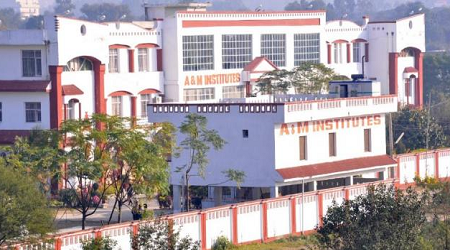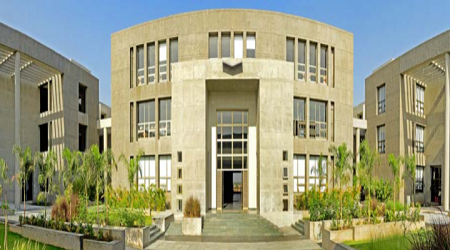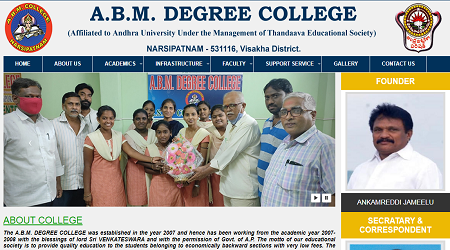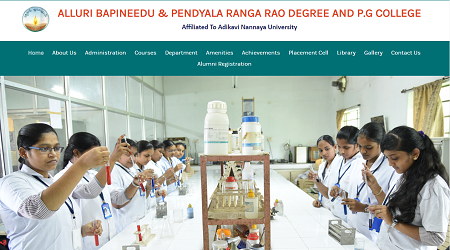Part Time Diploma in Radiography in admission
The Diploma in Radiography is a two- to three-year undergraduate study in the paramedical discipline. It deals with the identification of major diseases and other illnesses affecting internal organs and regions that are not apparent to the human eye. In this course, students learn how to use X-Ray, Fluoroscopy, Sonography (Ultrasound), Angiography, MRI (Magnetic Resonance Imaging), CT Scan, and other techniques and equipment.
THREE_BUTTON
Candidates must have completed their 12th grade with a scientific stream to be considered for the course. Some colleges may offer an entrance test for course admittance.
Course Highlights:
| Degree | Diploma |
| Full-Form | Diploma in Radiography |
| Duration | 2 or 3 years. |
| Age Between | 17 – 23 years. |
| Eligibility | 10+2 with 50 % |
| Course Fees | Rs. 1 Lakh – Rs. 2 Lakh |
| Average Starting Salary | INR 3 – 7 LPA |
| Job Positions | X-ray Technician, Diagnostic Radiographer, Therapy Radiographer, etc. |
Course Eligibility:
- The following are some of the most important eligibility criteria for obtaining a Diploma in Radiography.
- Candidates must have graduated from a recognized high school with a scientific major.
- Candidates must have a minimum percentage (percent) score of 45 to 60%, which varies according on the university or college to which they apply.
- Candidates must be between the ages of 17 and 35 to be considered for admission to the Diploma in Radiography program.
Admission Process:
- Admissions based on a student’s ability to pass an entrance exam
- Some of the most prestigious universities and institutes in the field of medical and healthcare have entrance exams for various courses, including the Diploma in Radiography. Exam notices are distributed, and exams are held at different periods during the year.
- Admissions on the basis of merit
- Most universities and colleges that offer a Diploma in Radiography provide both merit-based and direct admission options. Candidates must complete the application forms found on the institute’s website with all required information and papers. Most institutions used to have counseling procedures in existence, but these have now been phased out and replaced by merit-based admissions.
THREE_BUTTON
Entrance Exams:
- AIIMS Entrance Exam
- JNU-CEEB
- DUET
Entrance Exams Syllabus:
- Most universities and colleges use a semester-based curriculum. This course’s curriculum contains not only basic medical topics but also a wide range of technical topics.
- Students participating in the Diploma in Radiography program must finish the following disciplines during the course of the 3-year program.
- The curriculum is well-defined for students’ overall comprehension and hands-on training in order to mold and shape them into professional radiographers capable of serving in a variety of work roles.
How to Apply?
- The candidate must generate his or her own login ID and password.
- Go to the university’s official website and log in.
- Complete all relevant fields and submit all required papers.
- Pay the application fee through debit card, credit card, or net banking after uploading all needed papers.
- Select the submit option.
- These are the steps that candidates must take, and they are generally the same at most universities.
Documents Requirement:
- Mark sheet and pass certificate of your Class X or XII examination.
- Proof of date of birth.
- School leaving certificate
- Transfer certificate
- Domicile certificate/ residential proof or certificate
- Provisional certificate
- Character certificate
- Scheduled Caste/ Scheduled Tribe/Other Backward Caste certificates
- Proof of disability (if any)
- Migration Certificate
Top College:
| University College of Medical Sciences (UCMS) | New Delhi |
| Government Medical College | Amritsar |
| Institute Of Medical Technological Research | Kolkata |
| Poddar Group Of Institutes | Jaipur |
| Singhania University | Jhunjhunu |
| College of New Caledonia | Canada |
| Monash University | Australia |
| University of Suffolk | UK |
| University of Cumbria | UK |
| Teesside University | UK |
Course Subjects:
- Introduction to Radiography
- Pathology
- Anatomy
- Physics of Radiology
- Biochemistry
- Physiology
- Biostatistics
- Radiation Physics
- Computed Tomography
- Medical Physics
- Imaging Techniques
- Radio-diagnosis
- Magnetic Resonance and Imaging
- Radiographic Photography
- Microbiology
- Different Radiographic Techniques
- Nuclear Medicine Imaging
- Ultrasound Imaging
Future Course:
After finishing a diploma in radiography, one might pursue a postgraduate diploma in radiography. Although most students want to seek employment after earning their radiography diploma, taking a postgraduate program can greatly enhance your abilities and expertise. Many governments and private colleges around the country offer a PG Diploma in Radiography.
Ph.D. after a Diploma in Radiography: Students interested in conducting research in many areas of radiography can obtain a Ph.D. from a variety of universities and colleges in India and overseas. There are only a few seats available. With a rise in interest and demand for research in the field of diagnosis and radiation therapy, students earning a Diploma in Radiography are increasingly opting for a Ph.D. in Radiography. Before applying for a Ph.D., candidates must complete a postgraduate course with a Master’s in Radiography from a recognized university with a grade point average of at least 55 percent.
Future Job Scope:
- X-Ray Technician
- Diagnostic Radiographer
- Radiation Protection Specialist
- Radiation Therapy Educator
- Radiation Therapy Equipment Sales Representative
- Radiation Therapy Team Supervisor
- Radiation Therapy Technologist
- Radiation Therapy Treatment Researcher
- Therapy Radiographer
Salary Average:
| Radiation Protection Specialist | INR 7,78,000 |
| Therapy Radiographer | INR 1,82,000 |
| X-Ray Technician | INR 4,50,000 |
| Diagnostic Radiographer | INR 1,86,000 |
| Radiation Therapy Technologist | INR 4,75,000 |
THREE_BUTTON
FAQs:
| What is radiography, exactly? |
| The study of employing radiation to produce pictures of the tissues, organs, and other components of the human body is known as radiography. It is a branch of research that records photographs of patients’ bodies to assess the presence of disease, foreign objects, structural damage, or anomalies in order to diagnose or treat them. |
| How do you go about becoming a radiographer? |
| To pursue radiography, you must have finished 10+2 from a recognised educational board. After that, you can enrol in a three-year Diploma in Radiography programme. After completing their 12th grade exams, students can enrol in one-year certificate courses in specialised applications such as X-ray technician, Ultrasound Technician, and so on. |
| Is radiography a challenging course? |
| A radiography degree might be demanding. The material is not difficult to understand in and of itself; it is the vast amount of information that makes it challenging. You will not only have the same degree of anatomy knowledge as a doctor, but you will also study a great deal about technology, physiology, diseases, and injuries. |
| Do radiographers make a good living? |
| Entry-level occupations, such as X-ray technicians, typically pay roughly INR 4,00,000 per year. While more senior and experienced personnel might earn up to INR 8,00,000 per year. Overall, a Diploma in Radiography prepares graduates for a variety of well-paying jobs. |
| Is it stressful to work as a radiographer? |
| Lengthy work hours may need you to be on your feet for long periods of time, working in high-stress environments such as crowded A&E departments and dealing with difficult stressful situations. |
| Is Radiology a better option than Nursing? |
| Both nursing and radiology are excellent educational choices with numerous employment opportunities. Both courses, however, are distinct from one another. Individual preferences should be considered while making a decision. Before making a decision, think about your interests, employment positions, workplace, responsibilities, and so on. |
Read More
Latest News & Updates
- Top Engineering Colleges in India; Admission Procedure and Deadlines.
- The Role of Group Discusssions in the MBA Admission Process
- How to apply for scholarships to cover Jaipur National University PGDCA Fees
- Jaipur National University Fees for International Students: What to Know
- Tips for Budgeting Jaipur National University PGDCA Fees
- PhD Admission 2025: Required Documents and Application Tips.
- How to Choose a Topic for Research Proposal in India
- Common Mistakes to Avoid Research Proposal Writing in India
- The Importance of a Good Research Proposal Writing in India's Academic System 2025
- How to write a Great Research Proposal for PhD Admission 2025
Top Courses
- BACHELOR OF ARTS HONOURS IN ENGLISH
- BACHELOR OF ARTS IN STATISTICS
- BACHELOR OF ARTS IN EVENT MANAGEMENT
- BACHELOR OF SCIENCE IN CONSTRUCTION MANAGEMENT
- BACHELOR OF DESIGN IN ANIMATION & VFX
- BACHELOR OF COMMERCE IN OFFICE MANAGEMENT & SECRETARIAL PRACTICE
- BACHELOR OF ARTS IN DEVELOPMENTAL ECONOMICS
- BACHELOR OF SCIENCE HONOURS IN MATHEMATICS
- BACHELOR OF ARTS IN ENDOSCOPY
- BACHELOR OF BUSINESS ADMINISTRATION IN GLOBAL E-BUSINESS



